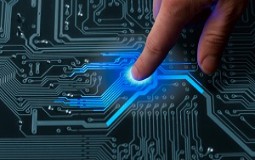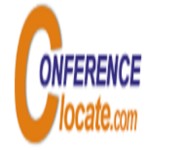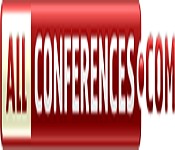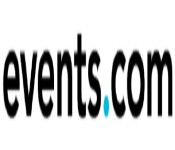
Biosensors 2022

Theme: New research and innovations of Biosensors Technologies and Bioelectronics
Biosensors Conference 2023 presents the 7th International Conference on Biosensors and Bioelectronics, scheduled on April 21-22, 2023 at New York, USA which will allow the professional to characteristic their exploration of work through introductions and have a probability to select up mastering about the present circumstance of bioengineering.
In the era of quantitative biology and healthcare considerable data, Biosensors & Bioelectronics appears to be the always trending topic with today's lookup technologies. Everyone who explores to strengthen their knowledge and gain extended advanced technical cleverness is welcome to present/get new ideas. We assure our attendees return to their place with the self-belief to improve their abilities and outfitted with certified approaches to work with us.
Meetings International offers a global platform for Medical, Engineering, Pharmaceutical, and Healthcare Professionals to exchange ideas, knowledge, and networking at 100+ Meetings International Conferences.
Session-1: Biosensors, Bio-sensing Technologies
The biosensor is an analytical device that converts a biological response into an electrical signal. The device is made up of a transducer and a biological element that may be an enzyme, an antibody, or nucleic acid. The characteristic identifying segment can be a substance, a receptor counter pro, or DNA. The transducer, which can be optical, physicochemical, piezoelectric, or electrochemical, produces an electrical standard contrasting with the social event of the substance being evaluated. Bio-sensing technologies are of increasing importance in healthcare, agriculture-food, environmental, and security sectors, and this is reflected in the continued growth of global markets for such technologies. Biomechanics is closely related to engineering because it often uses trade.
Biosensors Conference | Bioelectronics Conference | Biosensors Congress | Call For Abstract | Biosensors Meeting | Symposium | Young Researchers Forum | Registration | Sponsorship | Workshop | Exhibition
Session -2: Bioelectronics
Bioelectronics: Biological properties can be measured and altered using electronics, magnetics, photonics, sensors, circuits, and algorithms. Applications range from basic biological science to clinical medicine and enable new discoveries, diagnoses, and treatments by creating novel devices, systems, and analyses. Bioelectronics, specifically bio-molecular electronics, is described as 'the research and development of bio-inspired inorganic and organic materials and of bio-inspired hardware architectures for the implementation of new information processing systems, sensors, and actuators, and for molecular manufacturing down to the atomic scale'. The National Institute of Standards and Technology (NIST), defined bioelectronics in a report as "the discipline resulting from the convergence of biology and electronics". Bio-analysis is one of the sub-categories of Chemistry that helps in measuring Xenobiotics (unnatural concentration or location of drugs, Metabolites, and biological molecules) in a biological system. Biomedical devices are an amalgamation of science, sensors, interface equipment, microcontrollers, and PC programming, and require the blend of a couple of standard requests including science, optics, mechanics, number juggling, contraptions, science, and programming building. A key aspect is an interface between biological materials and micro- and Nano-electronics.
Biosensors Conference | Bioelectronics Conference | Biosensors Congress | Call For Abstract | Biosensors Meeting | Symposium | Young Researchers Forum | Registration | Sponsorship | Workshop | Exhibition
Session -3: Bio-MEMS/NEMS
Microelectromechanical systems (MEMS) have played key roles in many important areas, for example, transportation, communication, automated manufacturing, environmental monitoring, health care, defense systems, and a wide range of consumer products. MEMS are inherently small, thus offering attractive characteristics such as reduced size, weight, and power dissipation, and improved speed and precision compared to their macroscopic counterparts. Integrated Circuit (IC) fabrication technology has been the primary enabling technology for MEMS besides a few special etching, bonding, and assembly techniques. Microfabrication provides a powerful tool for batch processing and miniaturizing electromechanical devices and systems to a dimensional scale that is not accessible by conventional machining techniques. As IC fabrication technology continues to scale toward deep submicron and nanometer feature sizes, a variety of Nanoelectromechanical systems (NEMS) can be envisioned in the foreseeable future. Nanoscale mechanical devices and systems integrated with Nanoelectronics will open a vast number of new exploratory research areas in science and engineering. Bionics is the utilization of natural methods and frameworks found in nature for the examination and layout of framework systems. MEMS has been applied to a wide range of fields. Hundreds of microdevices have been developed for specific applications. Microstructure examples with dimensions on the order of submicron are presented with fabrication technologies for future NEMS applications.
Biosensors Conference | Bioelectronics Conference | Biosensors Congress | Call For Abstract | Biosensors Meeting | Symposium | Young Researchers Forum | Registration | Sponsorship | Workshop | Exhibitor
Session-4: Nanotechnology in Biosensors
Nanobiosensors are essentially sensors that are comprised of nanomaterials. They can play a very major role in the detecting system of biosensor innovation. Incorporated devices of the nanomaterials with electrical systems offer ascent to Nanoelectromechanical Systems (NEMS), which are extremely dynamic in their electrical transduction instruments. The nanotechnology-based biosensor or nano biosensor headway is changing the prosperity mind industry, for example, the nano biosensor advancement is utilized as a piece of the estimation of metabolites, checking of diabetes, and so on authentic medicine, country security. The utilization of nanomaterials for the improvement of biosensors has redesigned their affectability and execution of them and has permitted the presentation of different new pennant transduction propels in biosensors. Biosensors frequently comprise a biological recognition molecule immobilized onto the surface of a signal transducer to give a solid state analytical device. The use of nanomaterials has acknowledged the establishment of many new signal transduction technologies in biosensors through nanotechnology.
Biosensors Conference | Bioelectronics Conference | Biosensors Congress | Call For Abstract | Biosensors Meeting | Symposium | Young Researchers Forum | Registration | Sponsorship | Workshop | Exhibition
Session-5: Microfluidics- Technology & Healthcare
Microfluidics will be one of the key components of the current technological revolution in the biotech sphere, and it might accelerate some of the research on the aging process. Lab-on-a-chip technology has started to conquer biological and medical labs. Nanofluidics is drawing researchers' attention because it has unique liquid and fluidic properties that are not observed in any other technology. All these fields have advanced rapidly over the past 20 years and developed into cutting-edge technologies that have great application potential ranging from biology to electronics, from tissue engineering to organ-on-a-chip, from fertility enhancement to mutation diagnostics, from DNA sequencing to DNA modification, from continuous to digital microfluidics, from developing to the developed world. Nanomedicine is the medical application of nanotechnology for the treatment and prevention of major ailments, including cancer and cardiovascular diseases. Nanomaterials benefit from microfluidics in terms of synthesis and simulation of environments for Nanomotors and Nanorobots. Microfluidics seminars in relation to materials and technology make it easy to understand nanoparticles. In our opinion, the “marriage” of nanomaterials and microfluidics is highly beneficial and is expected to solve vital challenges in related fields.
Biosensors Conference | Bioelectronics Conference | Biosensors Congress | Call For Abstract | Biosensors Meeting | Symposium | Young Researchers Forum | Registration | Sponsorship | Workshop | Exhibition
Session-6: Bioinstrumentation
Bioinstrumentation is the development of technologies for the measurement and manipulation of parameters within biological systems, focusing on the application of engineering tools for scientific discovery and for the diagnosis and treatment of disease. Bioinstrumentation is a part of Biomedical engineering application of engineering principles and design concepts to medicine and biology for healthcare purposes (e.g. diagnostic or therapeutic).
Bioinstrumentation refers to high-tech, often costly instrumentation used to conduct cutting-edge research in the biological sciences. Biological research has been revolutionized in the last 15-20 years, these advances have provided the capacity to increase the scope and throughout of research activities. This expansion in scope has resulted in the development of new fields of study. Advances in instrumentation for techniques such as DNA sequencing and quantitative PCR, microarray analysis, and mass spectrometry now allow scientists to simultaneously study all of the genes and proteins of an organism, and have resulted in the new fields of genomics and proteomics.
Biosensors Conference | Bioelectronics Conference | Biosensors Congress | Call For Abstract | Biosensors Meeting | Symposium | Young Researchers Forum | Registration | Sponsorship | Workshop | Exhibition
Session-7: Optical Biosensors
Optical biosensors are a powerful alternative to conventional analytical techniques, for their particularly high specification, sensitivity, small size, and cost-effectiveness. Although promising developments of optical biosensors are being reported, there are not many reports on applications of optical biosensors in the practical field. The research and technological development of optical biosensors have experienced exponential growth during the last decade because this technology has a great potential for the direct, real-time, and label-free detection of many chemical and biological substances. The success of the biosensor technology can be deduced for the increasing number of commercially available instruments. A highly multidisciplinary approach including microelectronics, MEMS, micro/nanotechnologies, molecular biology, nano-biotechnology, and chemistry is needed for the implementation of such new analytical devices. Biosensing devices fabricated with optoelectronics micro/nanotechnologies are powerful devices that can fulfill these requirements. Optical biosensors offer great advantages over conventional analytical techniques. Optical biosensors are highly sensitive, rapid, reproducible, and simple-to-operate analytical tools. The obstacles to exploitation have been fundamentally related to the presence of biomaterial in the biosensor (immobilization of biomolecules on transducers, stability of enzymes, and antibodies), the development of the sensor device (sensitivity and reproducibility issues), and the integration of optical biosensors into complete systems. The integration of fluidics, electronics, separation technology, and biological subsystems is crucial for the development of biosensor systems. The sensor/sampling system biointerface is a key target for the construction of an integrated system. Optical biosensor research and development have been directed mainly towards healthcare, environmental applications, and the biotech industry.
Biosensors Conference | Bioelectronics Conference | Biosensors Congress | Call For Abstract | Biosensors Meeting | Symposium | Young Researchers Forum | Registration | Sponsorship | Workshop | Exhibition
Session-8: Biosensors for Environmental Monitoring
Biosensors are of great importance because of their several advantages over the conventional techniques in the field of analysis. Biosensors are researched and applied in several diverse areas, such as health, medicine, defense, agriculture and food safety, industry and environmental monitoring, etc.
Biosensors can be classified according to their transduction principle such as optical, electrochemical, and piezoelectric based on their recognition element as immunosensors, aptasensors, genosensors, and enzymatic biosensors, when antibodies, aptamers, nucleic acids, and enzymes are, respectively, used.|
The research on the construction of biosensors for environmental monitoring of organic pollutants, potentially toxic elements, and pathogens has been contributed to the sustainable development of society due to the problems of environmental pollution for human health.
In this field, biosensors have been widely employed as cost-effective, fast, in situ, and real-time analytical techniques. The need of portable, rapid, and smart biosensing devices explains the recent development of biosensors with new transduction materials, obtained from nanotechnology, and for multiplexed pollutant detection, involving multidisciplinary experts.
Biosensors Conference | Bioelectronics Conference | Biosensors Congress | Call For Abstract | Biosensors Meeting | Symposium | Young Researchers Forum | Registration | Sponsorship | Workshop | Exhibition
Session-9: Biosensors in Drug Discovery
Biosensors are, by definition, sensing devices comprising a biological component (enzyme, antibody, animal or plant cell, oligonucleotide, lipid, microorganisms, etc.) intimately connected to a physical transducer (electrode, optical fiber, vibrating quartz, etc.). This dual configuration permits a quantitative study of the interaction between a drug compound and an immobilized biocomponent. Enzyme-based biosensors can be applied in the pharmaceutical industry for monitoring chemical parameters in the production process (in bioreactors). Affinity biosensors are suitable for high-throughput screening of bioprocess-produced antibodies and for candidate drug screening. They are suitable for selective and sensitive immunoassays in clinical laboratories and for decentralized detection of drug residues. Enzyme-based biosensors may be used in hospitals for bedside drug testing, emergency control, inpatient treatment control (anticancer therapy), etc. Current research efforts are focused on proteins, tissues, or living cells immobilized in microfabricated configurations for high-throughput drug screening and discovery. These sensors allow the determination of the affinity and kinetics of a wide variety of molecular interactions in real-time, without the need for a molecular tag or label. Advances in instrumentation and experimental design have led to the increasing application of optical biosensors in many areas of drug discovery, including target identification, ligand fishing, assay development, lead selection, early ADME, and manufacturing quality control.
Biosensors Conference | Bioelectronics Conference | Biosensors Congress | Call For Abstract | Biosensors Meeting | Symposium | Young Researchers Forum | Registration | Sponsorship | Workshop | Exhibition
Session-10: Biomedical Engineering
Soft, biocompatible, resorbable, flexible, minimally invasive, durable, battery-less, and enabling wireless data transfer; are just a few of the key requirements for state-of-the-art bioelectronic devices for implantation in the body. Sensors and electrodes that mechanically behave like the tissue they are embedded into cause less tissue damage, make better tissue/device interfaces, and trigger weaker immune responses.
Drug delivery systems are bringing about technologies for the targeted drug delivery and measured issue of therapeutic agents. Drugs have long been used to improve fitness and extend lives. Biomedical engineers have given consideration to our understanding of the biological barriers to effective drug delivery, such as transport in the circulatory system and drug movement through cells and tissues.
Molecularly Imprinted Polymer (MIP) is a polymer having imprinted a molecule on its surface and the surface is able to interact with the molecule chemically equivalent to or at least resembling the template molecule.
Clinical Engineering is the branch of biomedical engineering dealing with the actual implementation of medical equipment and technologies in hospitals or other clinical settings. Clinical engineers also advise and collaborate with medical device producers regarding prospective design improvements based on clinical experiences, as well as monitor the progression of the state of the art so as to redirect procurement patterns accordingly.
Biosensors Conference | Bioelectronics Conference | Biosensors Congress | Call For Abstract | Biosensors Meeting | Symposium | Young Researchers Forum | Registration | Sponsorship | Workshop | Exhibition
Market Research:
As per the new statistical surveying report 'Biosensors market by application (POC, home diagnostics, research labs, biodefense, environmental monitoring, food, and beverages industry), Technology, Product (wearable and non-wearable), and geography-global forecast to 2023', the market is required to be esteemed at USD 27.06 billion by 2023, developing at a CAGR of 8.84% somewhere in the range of 2017 and 2023. The market development is driven by the persistent innovative headways in the biosensors biological community, the increment in the utilization of biosensors for nonmedical applications, lucrative development in POC diagnostics, and ascend in the interest for glucose checking frameworks.
The market in APAC anticipated that would develop at a high rate somewhere in the range of 2017 and 2023:
The market in APAC is relied upon to develop at a high rate somewhere in the range of 2017 and 2023. The expanding number of individuals experiencing diabetes and government activities toward the change of the social insurance segment in the locale are boosting the interest for glucose screens, in which biosensors are utilized, in APAC.
A portion of the real players working in the biosensors advertises incorporate Abbott Point of Care Inc. (US), Medtronic Inc. (US), F. Hoffman-La Roche Ltd. (Switzerland), Siemens AG (Germany), LifeScan Inc. (US), LifeSensors Inc. (US), Nova Biomedical Corp. (US), Acon Laboratories Inc. (US), Universal Biosensors (Australia), Pharmaco-Kinesis Corporation (US), Bayer Healthcare AG (Germany), Biacore (UK), Bio-Rad Laboratories Inc. (US), Biosensors International Ltd. (Singapore), Ercon Inc. (US), DuPont (US), and Sysmex Corporation (Japan).
Top institutes in Asia:
-
Nanyang Technological University (NTU) Singapore
-
National University of Singapore (NUS)
-
The Hong Kong University of Science and Technology (HKUST)
-
KAIST - Korea Advanced Institute of Science and Technology
-
University of Hong Kong (HKU)
-
Tsinghua University, China
-
Fudan University, China
-
City University of Hong Kong
-
Peking University, China
-
The Chinese University of Hong Kong (CUHK), Hong Kong
Top institutes in USA :
-
Stanford University
-
Harvard University
-
California Institute of Technology (Caltech)
-
University of Chicago
-
Princeton University
-
Cornell University
-
Yale University
-
Columbia University
-
University of Pennsylvania
Top institutes in Europe:
-
Massachusetts Institute of Technology (MIT), United States
-
Stanford University, Stanford University
-
University of California, Berkeley (UCB), United States
-
University of Cambridge, United Kingdom
-
National University of Singapore (NUS), Singapore
-
California Institute of Technology (Caltech), United States
-
Delft University of Technology, The Netherlands
-
Imperial College London, United Kingdom
-
Kyoto University, Japan
-
University of Oxford, United Kingdom
Top institutes in UAE:
-
Al Ghurair University (AGU)
-
University of Dubai (UD)
-
Zayed University
-
Biotechnology University College Dubai (BUC)
-
The Higher Colleges of Technology (HCT)
-
American University in Dubai (AUD)
-
University of Wollongong in Dubai (UOWD)
-
British University in Dubai (BUiD)
-
American University in the Emirates (AUE)
Meetings International recognizes the commitment and amazing work in all fields of academics and research. By recognizing their contribution; Meetings International inspires and motivates scholars, researchers and academics by awarding the Best YRF and Researcher Awards in all academic disciplines and categories along with other specific awards. These awards include the prestigious Certificate of Award with other gifts.
Keynote Speaker Awards
Biosensors 2023 chooses a relevant keynote speaker to speak at the conference. All accepted keynote speakers' proposals will be considered for the Best Keynote Speaker Awards. The committee will select a number of candidates for the award among the accepted proposals. The winner will be selected at the conference, taking into consideration both the proposal and the presentation. Best keynote speaker can help to boost motivation, change their way of thinking and make audience energized and inspired. For Keynote the person should be eminent or highly affiliated like Dean, Professor, HOD, Chair persons, CEO, CFO, MD etc. Selection of the Best Keynote Speaker will be made on the basis of the participant contribution and years of experience in the respective research field. Each submission will be accepted based on the quality of abstract and conference theme. Irrelevant submissions will be rejected .The acceptance and rejection of abstract submissions will be selected by the Organizing committee. All submissions will go through a quality checking. Final approved abstract will consider for Keynote awards.
Outstanding Speaker Awards
Biosensors 2023 believes in recognising our best speaker. The best speaker is selected as per their research abstract before the conference. All winners are determined by a selection panel. This award is designed to recognise and identify outstanding speakers who have achieved recent extraordinary eminence and success. Being an outstanding speaker means to deliver a message that engages an audience. The outstanding speaker awards will also be given on the basis of organization and professionalism of presentation, communication skills of the presenter and appropriate use of time. Each session will be evaluated separately. For speaker the person should be Professor, Researcher, Scientist, Entrepreneur etc. .Selection of the Speaker will be made on the basis of the participant contribution in the respective research field. Each submission will be accepted based on the quality of abstract and conference sessions. Irrelevant submissions will be rejected. The acceptance and rejection of abstract submissions will be selected by the Organizing committee. All submissions will go through a procedure of quality checking by our team. Final approved abstract will consider for outstanding speaker award.
OCM Award
The organizing committee can avail in the process of managing the multiple tasks that need to be done. Committee members, having a good erudition of the event management plan, are well placed to provide training, supervision and assistance to other personnel involved in the organisation of the event. Meetings International will honor as a best OCM the individual who has demonstrated their support and guidance throughout the conference. OCM should be eminent or highly affiliated like Dean, Professor, HOD, Chair persons, CEO, CFO, MD etc. .Selection of the best OCM will be made on the basis of the participant contribution and years of experience in the respective research field. They must have good number of research papers and citations and should be more years of experience.
Outstanding Masters/Ph.D/Post. Doc Thesis work presentation Award
Biosensors 2023 gives the opportunity to young researchers in the different field of conferences. The best participants are selected as per their research abstract before the conference. If you are a young and dynamic researcher than you can join our conferences to explore new idea and research. A panel of judges will select the best YRF. Best YRF will be recognized publicly at the end of the conference. The Best YRF Awards will be given to the most outstanding presentation presented by a participant who has registered under the student category. Undergraduates, Master students, and Ph.D. students will be considered under this category. Selection of the YRF will be made on the basis of the participant contribution in the respective research field each submission will be accepted based on the sessions of the conference. Irrelevant submissions will be rejected. The acceptance and rejection of abstract submissions will be selected by the committee. All submissions will go through a quality checking. Final approved abstract will consider for YRF award.
Best Poster Awards
To be eligible for the awards Students interested in having their posters considered for the Biosensors 2023 conference, they must have submitted an abstract of their poster to the conference. The award committee will consider all posters that relate to the study of public opinion, whether they focus on theory, substantive findings, research methods, and/or statistical techniques used in such research. All posters will automatically be considered for the Poster Awards and the posters will take place in the conference venue and Poster Judges will select the best posters. The winners will be formally announced during the closing ceremony. The winners will receive a certificate award.
Guidelines for Poster
- Poster Size: Each poster should be approximately 1x1 M long. The title, contents and the author’s information should be clearly visible from a distance of 1-2 feet.
- Content: Use fonts such as Arial/Times New Roman in a reasonable font size that should be easy to read.
- The spacing between the lines should also be taken into consideration.
- A very simple format should be used representing all the details about the research carried by the author.
- Long narrated paragraphs should be avoided.
- Short phrases and bulleted points should be used in the poster to present the main highlights of the work done.
Guidelines for Abstract
- Only abstracts submitted in English will be reviewed.
- Abstracts must not exceed 500 words (excluding the title, author affiliation and biography)
- Abstract should follow the instructions on the following template (Abstract Template).
- Do not include references or figures in the keynote abstract.
- Abstract should contain biography, photograph and short description about research
- Abstract must contain presenter name, affiliation and country
- Abstract title and abstract content should be relevant
Meetings Int. is a worldwide pioneer in delivering top-notch gatherings, workshops, and symposia in every significant field of science, innovation, and medication worldwide receives 400,000+ online visitors with 1000+ sessions which confirms the outstanding pool of new users and visitors creating a platform to build your market place globally. Since its initiation, Meetings Int. has been related with national and global affiliations, organizations, and elevated level people, committed to having world-class meetings and occasions so its provide a big platform to show your product and advertise.
The explorers’ traffic is the benchmark for advertisement and the Biosensors website is continually dragged in observers over the world. As specified by Google Analytics, in excess of 50,743 Researchers and industrialists are visiting our conference sites. Bioelectronics and Biosensors help you to put the spotlight on your brand by advertising with more than 9 million+ readers worldwide and about 5 million+ hits every month on our site. We provide a good opportunity to boost your business on our platform. We offer a range of eye-catching advertising spaces and branding. Researchers from significant nations including United States, Japan, United Kingdom, India, France, Taiwan, and Germany visit our conference site. Subscribers and conference attendees can be your upcoming enthusiastic customers. We maintain high quality and ethical standards in the event industry, which makes us unique and better than the rest.
Advertisement banner must be provided by the advertising company and must be in the jpg or jpeg format. The banner must be of high resolution and must not have copyright infringement.
For further queries, connect our Program Manager at biosensors@theexpertsmeet.com
You can also connect us via WhatsApp: +65 3158 1626
- Biosensors, Bio-sensing Technologies
- Bioelectronics
- Bio-MEMS/NEMS
- Nanotechnology in Biosensors
- Microfluidics- Technology & Healthcare
- Bioinstrumentation
- Optical Biosensors
- Biosensors for Environmental Monitoring
- Biosensors in Drug Discovery
- Biomedical Engineering
- Journal of Biochemical Engineering & Bioprocess Technology
- Journal of Electrical Engineering and Electronic Technology
- Biomaterials and Medical Applications
- Advanced Biomedical Research and Innovation























































































































